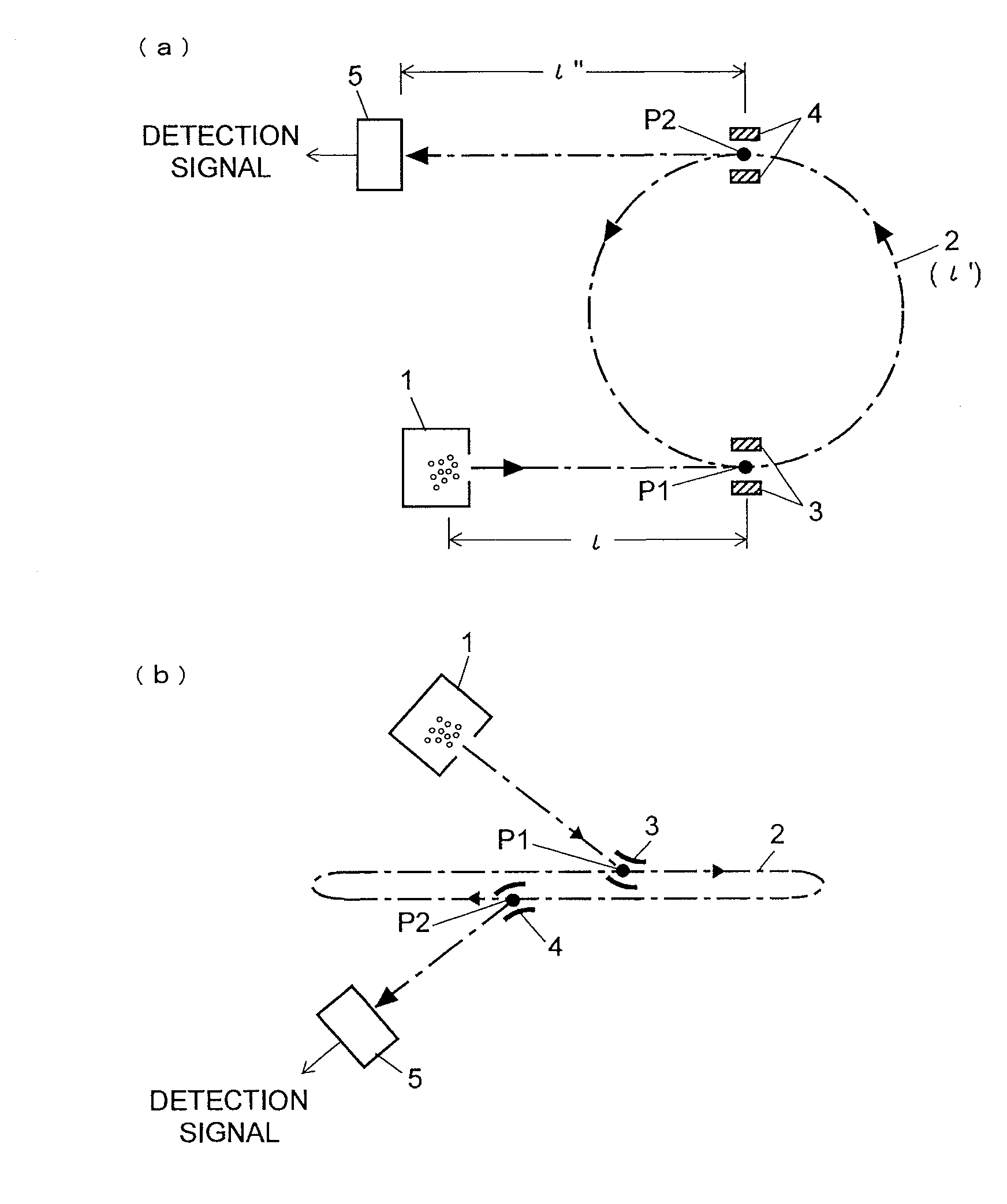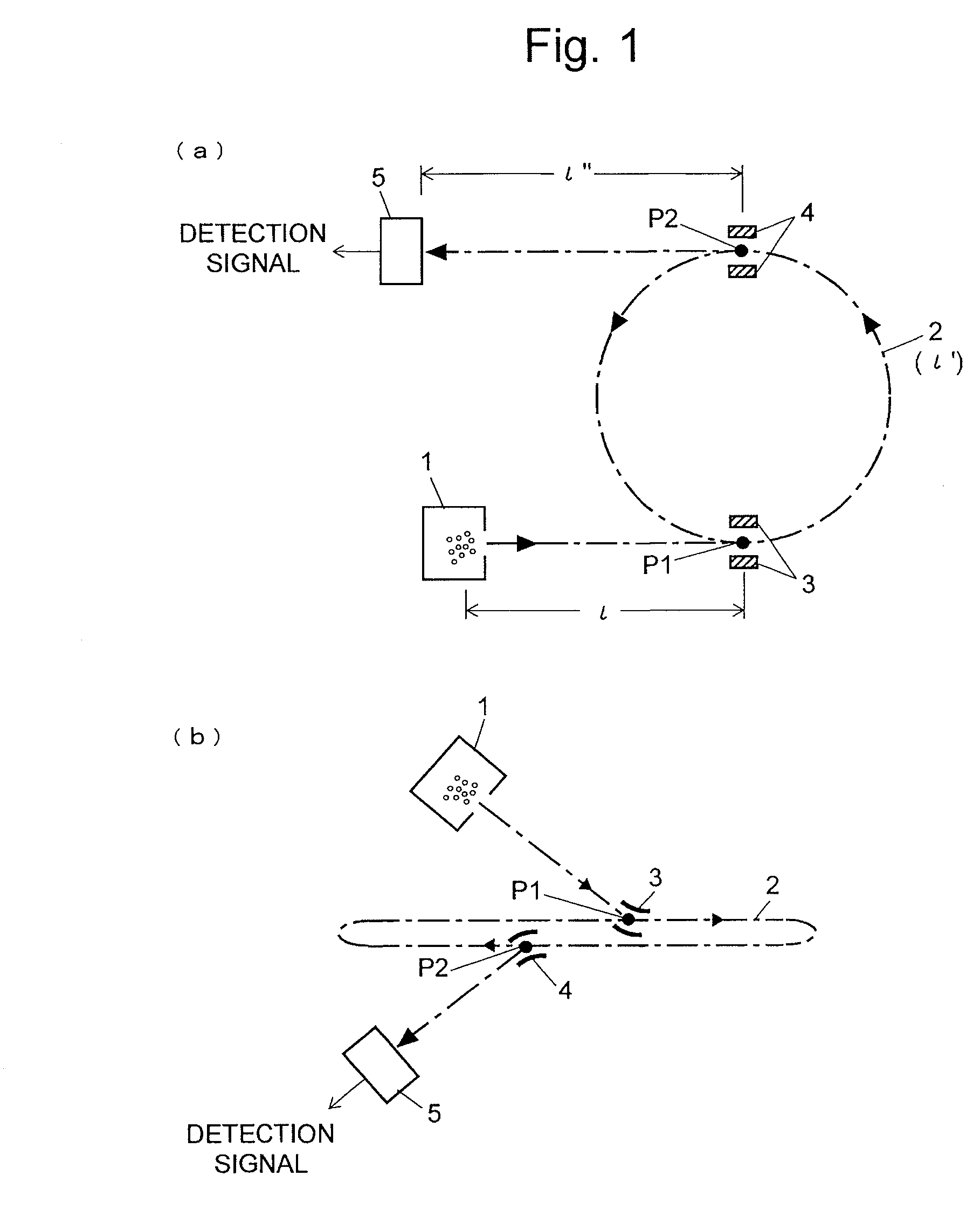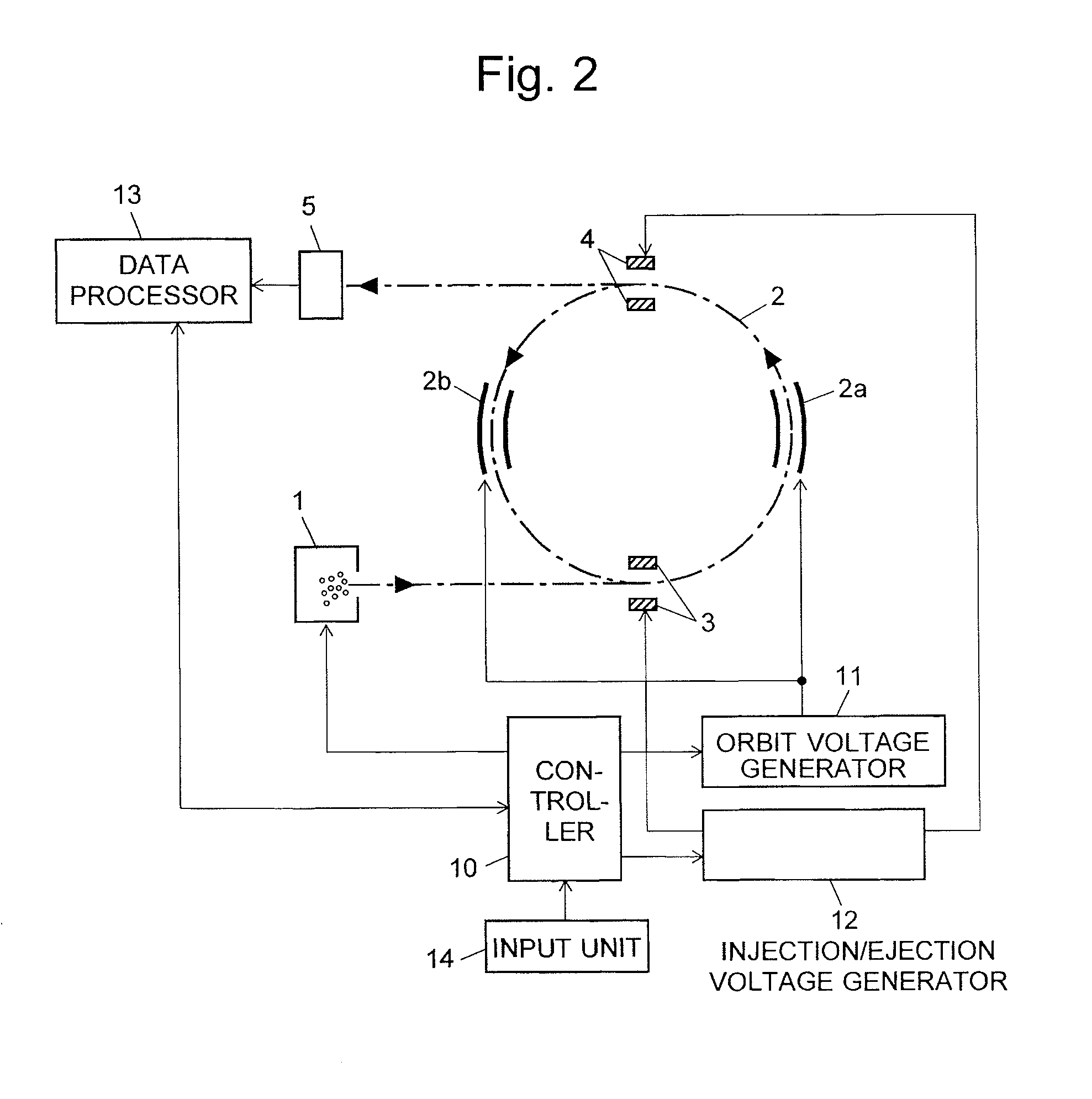Mass analysis method and mass analysis system
a mass analysis and mass technology, applied in the field of mass analysis methods and mass analysis systems, can solve the problems of deteriorating measurement throughput, requiring a considerable length of measurement, and the inability to directly convert time-of-flight spectrum to mass spectrum, so as to achieve high mass resolution and improve measurement throughput.
- Summary
- Abstract
- Description
- Claims
- Application Information
AI Technical Summary
Benefits of technology
Problems solved by technology
Method used
Image
Examples
example
[0084]To verify the effectiveness of the technique used in the previously described mass analysis method according to the present invention, a simulation was performed as follows.
[0085]The simulation assumed that the system had a configuration shown in FIG. 1(a), with ι=ι′ι″=0.5 [m] and L=1.0 [m]. The ion-accelerating voltage was 10 kV. The sampling rate for signal observation was 1 GS per second. The ions to be measured were simulated by generating random numbers, which represented the number of existing ion packets and the mass and intensity of each ion. A restriction due to the structure of the ion optical system was imposed on the mass range for generating the ions, as will be hereinafter described.
[0086]While introducing ions into the loop orbit 2, the injection switch 3, which is used for guiding ions from the ion source 1 into the loop orbit 2, is supplied with a voltage to deflect the ions. While the ions are flying through the loop orbit 2, this voltage must be set to zero ...
PUM
 Login to View More
Login to View More Abstract
Description
Claims
Application Information
 Login to View More
Login to View More - R&D
- Intellectual Property
- Life Sciences
- Materials
- Tech Scout
- Unparalleled Data Quality
- Higher Quality Content
- 60% Fewer Hallucinations
Browse by: Latest US Patents, China's latest patents, Technical Efficacy Thesaurus, Application Domain, Technology Topic, Popular Technical Reports.
© 2025 PatSnap. All rights reserved.Legal|Privacy policy|Modern Slavery Act Transparency Statement|Sitemap|About US| Contact US: help@patsnap.com



